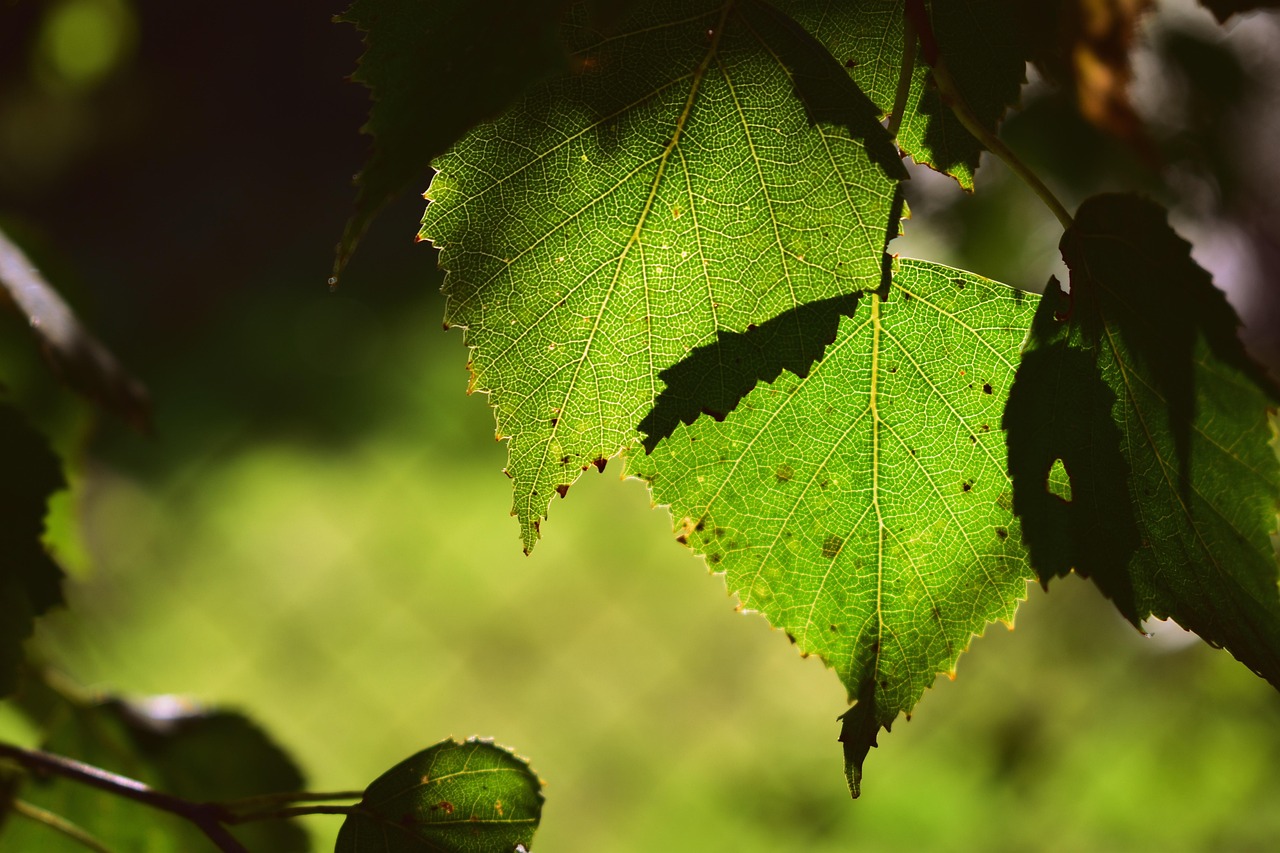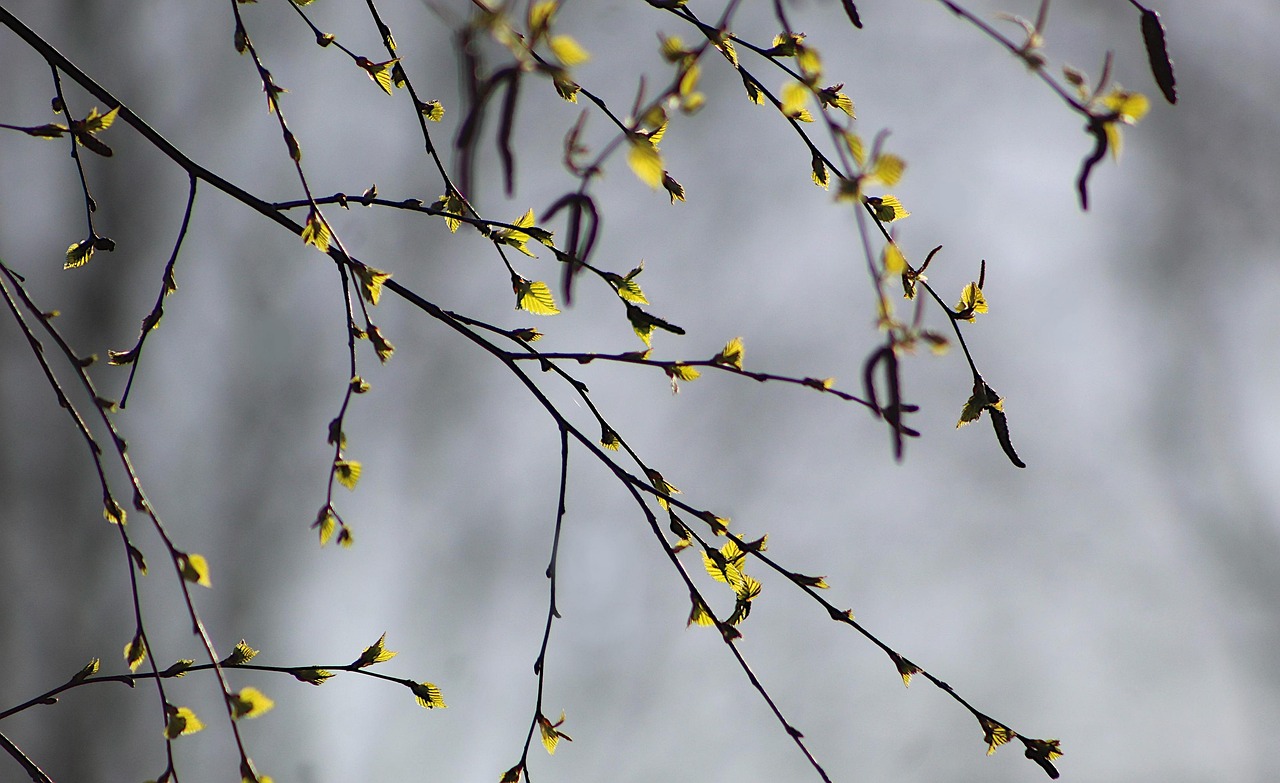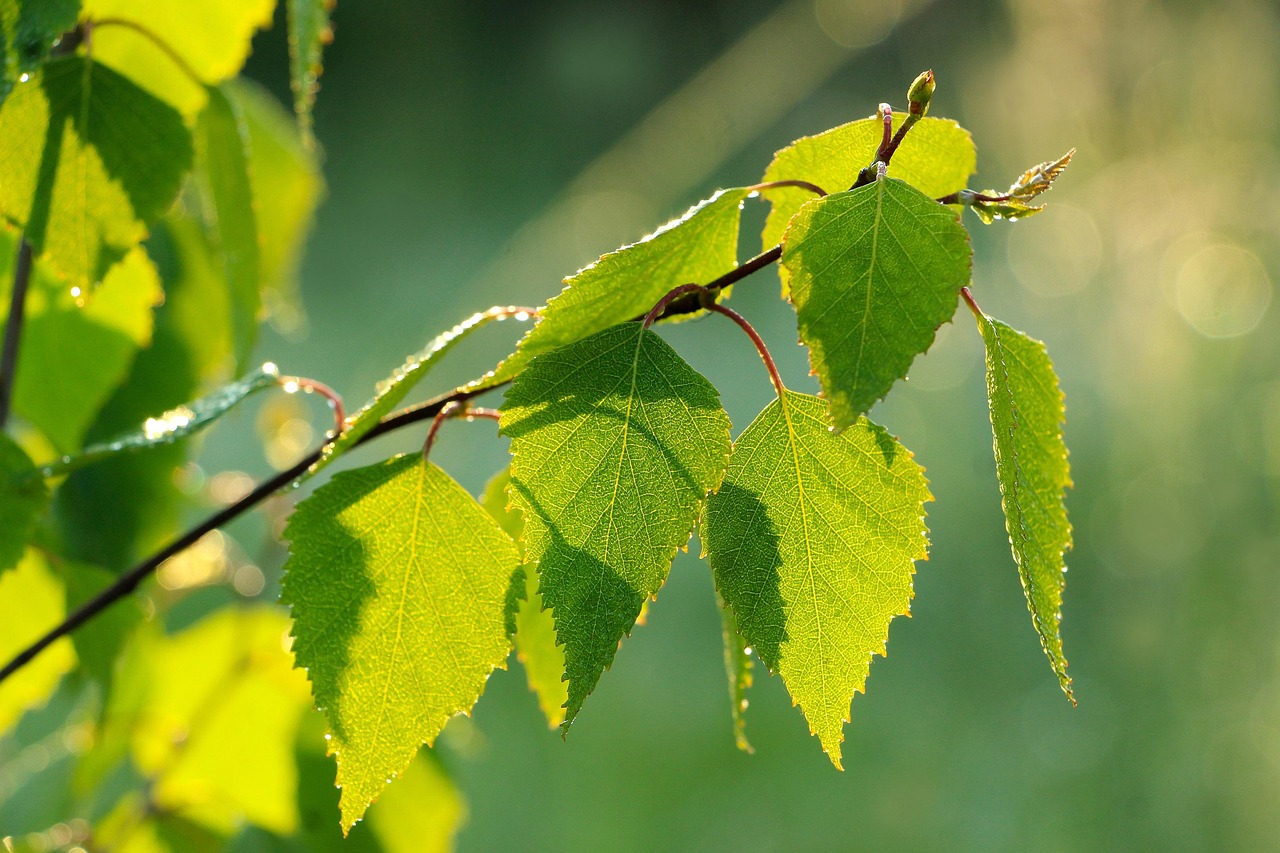Birch trees are a beloved sight in many landscapes, known for their striking white bark and delicate leaves. These trees not only offer beauty but also provide important ecological benefits. Understanding how to identify birch tree leaves can enhance your appreciation of these classic beauties and help in various gardening and landscaping endeavors.
Birch trees belong to the genus Betula and are part of the family Betulaceae. They are commonly found in northern temperate regions and are well-adapted to different soil types. One of the most notable features of birch trees is their leaves. Birch leaves are typically simple, alternate, and serrated, making them relatively easy to identify. However, there are several species of birch, each with its unique leaf characteristics.

The leaves of birch trees play a significant role in their overall health and growth. They are responsible for photosynthesis, which is the process that allows the tree to convert sunlight into energy. Additionally, the shape and size of leaves can vary between different species, which is essential for identification purposes.
| Species | Leaf Shape | Leaf Size | Fall Color |
|---|---|---|---|
| Silver Birch (Betula pendula) | Triangular, serrated | 3-6 cm long | Yellow |
| River Birch (Betula nigra) | Oval, slightly wavy | 5-10 cm long | Golden yellow to brown |
| White Birch (Betula papyrifera) | Diamond-shaped, finely serrated | 5-10 cm long | Bright yellow |
| Dwarf Birch (Betula glandulosa) | Round, small serrations | 2-5 cm long | Golden yellow |
Identifying Birch Tree Leaves
Identifying birch tree leaves involves examining several key features. The shape, size, edge, and color can all provide clues about the specific species of birch tree. Below are some of the main characteristics to consider when identifying birch leaves.
Leaf Shape
The shape of birch leaves ranges from triangular to oval. For instance, the Silver Birch has a more triangular shape, while the River Birch tends to be oval. Observing the leaf shape is one of the first steps in identifying these trees.
Leaf Size
Birch leaves also vary in size. Some species have smaller leaves, such as the Dwarf Birch, which measures only 2-5 cm long, while others like the River Birch can grow up to 10 cm long. Size can help narrow down the species.
Leaf Edge Features
The edges of birch leaves are often serrated or wavy. The silver birch features finely serrated edges, while the River Birch has slightly wavy margins. These details contribute significantly to identification efforts.
Seasonal Changes
The color of birch leaves changes with the seasons. In autumn, many birch species display vibrant yellow hues, which can add visual interest to gardens and landscapes. This seasonal change not only enhances identification but also creates beautiful scenery.
Understanding these aspects of birch tree leaves makes identification easier and enriches your knowledge of these remarkable trees. Whether you are a nature lover, a gardener, or simply curious about your surroundings, recognizing birch leaves can enhance your connection with nature.
Ecological Importance of Birch Tree Leaves
Birch tree leaves do more than just beautify the landscape; they play a crucial role in the ecosystem. These leaves contribute significantly to the health of both the tree and the environment. Understanding their ecological importance can enhance our appreciation for these trees.
Photosynthesis and Energy Production
Like all leaves, birch leaves are vital for photosynthesis. This process allows the tree to convert sunlight into energy. The chlorophyll present in the leaves absorbs light, enabling the tree to produce glucose and oxygen. This not only sustains the tree itself but also benefits other living organisms.
Habitat for Wildlife
Birch trees provide vital habitats for various wildlife species. The leaves serve as food for many insects and animals. Some key points regarding wildlife interactions include:
- Insect Food Source: Many insects, such as caterpillars, feed on birch leaves. These insects are important food sources for birds and other predators.
- Nesting Material: Birds often use birch leaves to line their nests, providing insulation and comfort for their young.
- Fungi and Microorganisms: The decomposition of fallen birch leaves enriches the soil with nutrients, promoting biodiversity.
Soil Enrichment and Nutrient Cycling
The leaves of birch trees contribute to soil health through a process called leaf litter decomposition. When leaves fall in autumn, they create a layer of organic matter on the ground. As they decompose, they release nutrients back into the soil. This cycle is vital for maintaining healthy ecosystems.
Birch leaves are particularly beneficial as they break down quickly compared to other leaf types. This rapid decomposition supports the growth of other plants and helps sustain the forest floor’s ecosystem. The resulting nutrient-rich soil promotes plant diversity, which is essential for a robust ecological community.
Identifying Different Birch Species by Their Leaves

While we have discussed general characteristics of birch leaves, each species has unique traits that aid in identification. Here are a few more birch species and their distinctive leaf features:
Yellow Birch (Betula alleghaniensis)
The Yellow Birch is known for its shimmering yellow bark, but its leaves are equally distinct:
- Shape: The leaves are oval to elliptical with a pointed tip.
- Size: They typically measure 5-10 cm in length.
- Edge: The edges are finely serrated.
- Fall Color: In autumn, the leaves turn a bright yellow, adding vibrancy to the landscape.
Paper Birch (Betula papyrifera)
Known for its striking white bark, the Paper Birch features:
- Shape: The leaves are diamond-shaped.
- Size: They usually grow between 5-10 cm long.
- Edge: The serrated edges are prominent.
- Fall Color: Leaves transition to brilliant yellow in autumn.
Black Birch (Betula lenta)
The Black Birch is another noteworthy species with distinct leaf characteristics:
- Shape: The leaves are ovate with a pointed tip.
- Size: They range from 5-10 cm in length.
- Edge: The edges are finely serrated with a wavy margin.
- Fall Color: Leaves turn yellow or golden brown during autumn.
Recognizing these species by their leaf characteristics can enhance your understanding of birch trees and their diverse roles in the environment. Each species contributes uniquely to its ecosystem while providing beauty and shade in landscapes.

Common Uses of Birch Tree Leaves

Birch tree leaves have been utilized by various cultures for centuries. Their unique properties and benefits make them valuable not only in nature but also in human applications. Exploring the common uses of birch leaves can reveal their importance beyond just aesthetics.
Traditional Medicinal Uses
Many indigenous cultures have recognized the healing properties of birch leaves. They have been used in traditional medicine for various ailments. Some notable medicinal uses include:
- Anti-inflammatory Properties: Birch leaves are known for their ability to reduce inflammation, making them useful in treating joint pain and conditions such as arthritis.
- Diuretic Effects: The leaves act as a natural diuretic, promoting urine production and helping to flush toxins from the body.
- Cough Relief: Infusions made from birch leaves can be used to soothe coughs and respiratory issues, providing relief from congestion.
Culinary Uses
In addition to their medicinal properties, birch leaves have culinary applications. They can be used in various ways:
- Flavoring Agents: Young birch leaves are edible and can add a mild, sweet flavor to salads and dishes.
- Infusions: Birch leaf tea is a popular beverage that is enjoyed for its light, herbal taste and health benefits.
- Smoked Foods: Dried birch leaves can be used to enhance the flavor of smoked meats and fish, providing a unique taste experience.
Environmental Uses
Birch leaves also play a significant role in environmental applications. Their natural properties contribute to various ecological practices:
- Soil Improvement: As previously mentioned, decomposed birch leaves enrich the soil with nutrients, promoting healthy plant growth.
- Erosion Control: The leaves, along with the tree’s root system, help prevent soil erosion by stabilizing the ground.
- Wildlife Habitat: Birch trees provide habitat not only through their trunks but also through their foliage, offering shelter and food to various species.
Birch Tree Leaf Characteristics Throughout the Seasons
The appearance and characteristics of birch leaves change throughout the seasons, which can aid in identification and appreciation of these trees at different times of the year.
Spring: A Time of Renewal
In spring, birch trees awaken from dormancy, and new leaves begin to emerge. Young leaves are often bright green and tender, bringing a refreshing vibrancy to the landscape. This is an excellent time to observe the leaf shape and size as they develop.
Summer: Full Growth
During summer, birch leaves reach their full size and color. The lush green foliage provides shade and habitat for wildlife. Observing the leaf’s health is easier during this season, as any discoloration or damage can indicate potential health issues with the tree.
Autumn: A Colorful Transformation
As autumn approaches, birch leaves undergo a dramatic transformation. The vibrant yellow hues signal the change in season. This colorful display is not only visually stunning but also serves as an indicator of the tree’s health as it prepares for winter.
Winter: Dormancy and Resilience
In winter, birch trees shed their leaves, revealing bare branches. The absence of leaves allows for easier identification of the tree structure. The starkness of winter showcases the resilience of birch trees as they endure harsh weather conditions until spring returns.
The seasonal changes in birch leaves enhance their beauty and ecological importance. Each phase offers unique opportunities for observation and understanding, contributing to a deeper connection with nature.
Conservation and Care for Birch Trees
As we appreciate the beauty and ecological significance of birch trees, it is essential to consider their conservation and care. Birch trees, like many other species, face threats from environmental changes, pests, and diseases. Taking steps to protect and nurture these trees can ensure they continue to thrive in our landscapes.
Pest and Disease Management
Birch trees can be susceptible to various pests and diseases that may affect their health and longevity. Some common issues include:
- Birch Borer: This beetle can cause significant damage to birch trees by boring into the bark. Regular monitoring for signs of infestation is crucial.
- Leaf Spot: Fungal infections can lead to discolored leaves and affect the tree’s ability to photosynthesize effectively.
- Root Rot: Overwatering or poor drainage can lead to root rot, which can be detrimental to birch health.
Implementing organic or chemical treatments, as well as ensuring proper watering and drainage, can help mitigate these issues. Consulting with local arborists or extension services can provide tailored advice for specific regions and conditions.
Optimal Growing Conditions
To promote healthy birch trees, it is important to plant them in suitable environments. Birch trees thrive in:
- Well-Drained Soil: They prefer moist, well-drained soils that allow for healthy root development.
- Sandy or Loamy Soil Types: These soil types provide adequate nutrients while preventing waterlogging.
- Sunlight: Birch trees thrive in full sun to partial shade, making them ideal for open spaces or alongside other trees.
When planting birch trees, it is advisable to choose native species, as they are well-adapted to local climates and ecosystems. This choice not only supports biodiversity but also promotes a healthier environment.
Final Thoughts
Birch trees, with their elegant leaves and beautiful bark, hold a special place in both natural landscapes and human appreciation. The unique characteristics of birch leaves make them easy to identify and deeply significant to their ecosystems. From their contributions to wildlife habitats to their role in soil health, birch leaves are essential components of the environments they inhabit.
Understanding the various species of birch, their seasonal changes, and their ecological roles enhances our connection to nature. Moreover, recognizing the importance of conservation efforts ensures that future generations can continue to enjoy the beauty of these classic trees. By caring for birch trees and promoting their growth in our communities, we contribute to a healthier planet and a more vibrant natural world.
In summary, whether you are an avid gardener, a nature enthusiast, or simply someone who enjoys the outdoors, learning about birch trees and their leaves enriches your experience with nature. Their beauty, utility, and importance in the ecosystem make birch trees a classic beauty worth celebrating.
